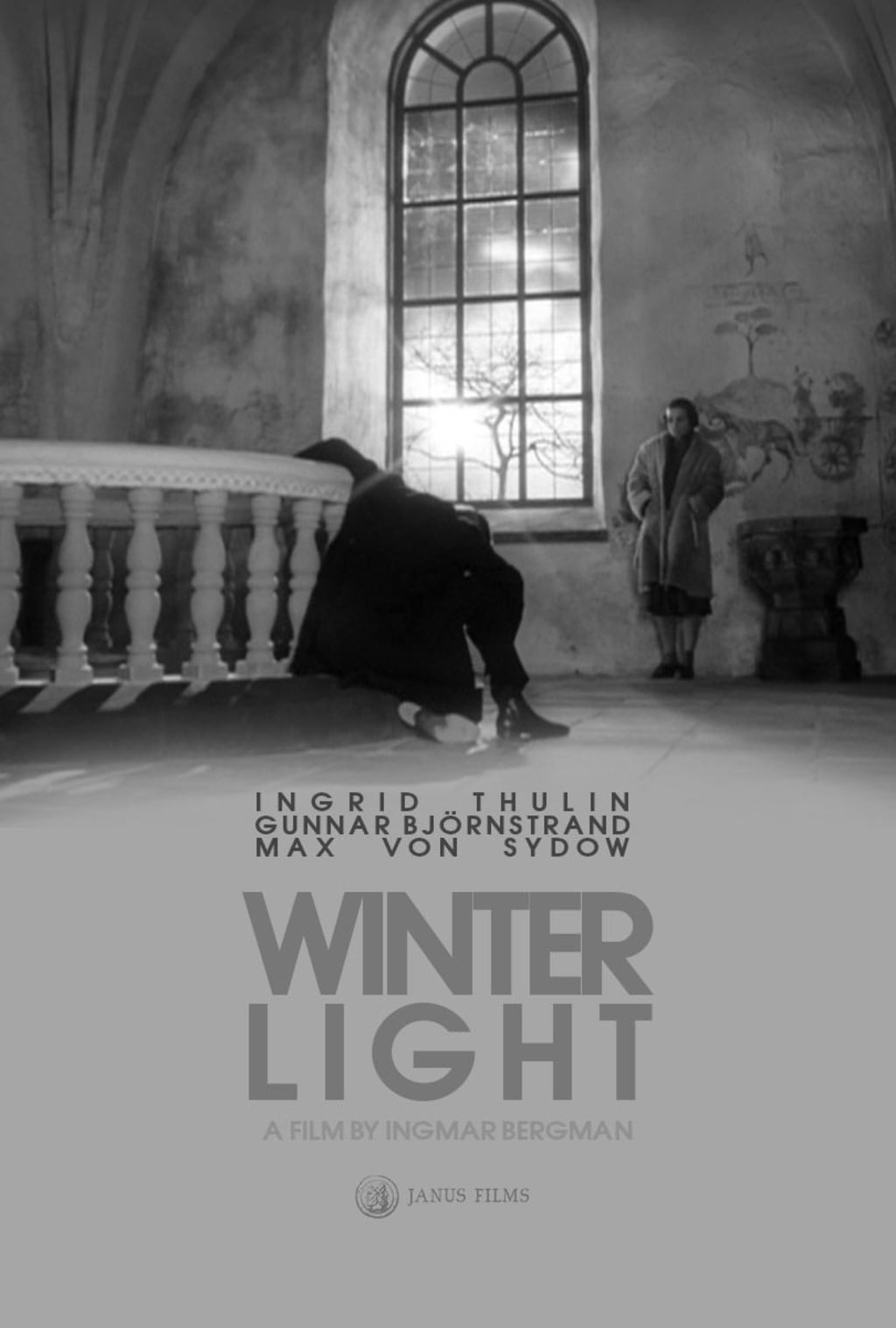A Filmmaker's Guide: "Winter Light" (1963)
Film Studies (p.162)

In this chapter of ‘the filmmaker’s guide’ we’re actually going to be learning about literature and film together. I understand that many of you are sitting in university during difficult times and finding it increasingly hard to study and I understand that many of you who are not at university or not planning on it are possibly stuck of what to do, need a break or even need to catch up on learning film before you get to the next level. This guide will be brief but will also contain: new vocabulary, concepts and theories, films to watch and we will be exploring something taboo until now in the ‘filmmaker’s guide’ - academia (abyss opens). Each article will explore a different concept of film, philosophy, literature or bibliography/filmography etc. in order to give you something new to learn each time we see each other. You can use some of the words amongst family and friends to sound clever or you can get back to me (email in bio) and tell me how you’re doing. So, strap in and prepare for the filmmaker’s guide to film studies because it is going to be one wild ride.
'Winter Light'

Ingmar Bergman is probably best associated with the creation of what is now the most well-known Swedish film to date: "The Seventh Seal" (1957). But his other films are also worth a watch - personally, I would put "Winter Light" (1963) on par with "The Seventh Seal" in its exploration of life and death. Though "The Seventh Seal" (1957) is more explicit, "Winter Light" (1963) is far more subtle with its treatment of the themes. Death is no longer a character, but instead a lingering feeling that looms over the storyline and haunts those within it with a sense of impending doom.
The sense of the existential crisis is almost like the 'impending doom' - one person experiences it, voices it to another character and it is almost catching. The next character cannot seem to let go of it or get it out of their mind. It is only the moment of death or suicide which will break this enormous amount of philosophical tension for everyone involved. Ingmar Bergman represents the catharsis of death as something to be wanted, not actually as depressing as we believe it to be. It lifts the movie into a new philosophical sphere in which all the characters experience this outpouring of some kind of emotion and then, begin to recuperate themselves. The end of the movie symbolises this new beginning and yet, the audience do not know whether this is truly a new beginning, or something else about to happen as if we are stuck in a cycle.

Bergman himself once stated that this film was the second in a trilogy in which:
"These three films deal with reduction." (Steene, 2005)
However, he later retracted the statement. Audiences everywhere though see how Ingmar Bergman fleshes out the ideas of life and death in many different ways in the first instalment, "Through a Glass Darkly" and then the last instalment (coming after "Winter Light"), "The Silence". It is not to say that these movies are meant to be watched one after the other, but each deals with similar themes even though in the latter parts of his career, Bergman refused to acknowledge this like he once did.
But what does he mean by 'deal with reduction'?

Reduction means to make something smaller (I think we all know that). But, what is being 'reduced' by Bergman in these films? Hope. Hope is being reduced further and further. If you watch "The Silence" after "Winter Light" then you will be able to see how the theme of hope gets drastically reduced into the negative in comparison to the theme of hope reduced between first two instalments of the 'trilogy'.
- Hope is somewhat in the positive during the first instalment: "Through a Glass Darkly"
- Hope becomes an existential crisis in the second instalment: "Winter Light".
- Finally, hope is diminished and becomes a form of negative capability. It is no longer a positive aspect of life since there is so little left.
Conclusion

Ingmar Bergman's films are among some of my favourite to analyse purely because each person sees the theme differently because there are so many things to concentrate on from: characters to plot, themes to symbols, ideas and philosophies, dialogue, cinematography and all of this, all of it, adds to the deeper meaning of the film.
Citations:
Steene, B. (2005) Ingmar Bergman: A Reference Guide. Amsterdam: Amsterdam University Press.
About the Creator
Annie Kapur
200K+ Reads on Vocal.
English Lecturer
🎓Literature & Writing (B.A)
🎓Film & Writing (M.A)
🎓Secondary English Education (PgDipEd) (QTS)
📍Birmingham, UK






Comments
There are no comments for this story
Be the first to respond and start the conversation.